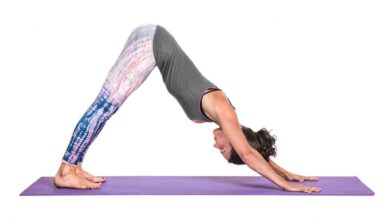How Power Yoga Stands Out from Conventional Yoga Practice
Exploring the uniqueness of Power Yoga alongside other yoga styles, it’s evident there’s a rich diversity in yoga practices. Power Yoga is tailored to enhance muscle strength and boost cardiovascular fitness. This yoga variant is characterized by its challenging poses, quick transitions between them, offering a vigorous workout unlike the repetitive pose sequences found in other yoga disciplines, ensuring each class experience is distinct.
This piece delves deeper into Power Yoga – its essence, benefits, possible disadvantages, and steps to begin. Power Yoga hinges on the principle of stamina and endurance development, making it a fantastic choice for calorie-burning. Though the term ‘Power Yoga’ is not officially designated to any specific yoga type, it is frequently used to refer to Vinyasa yoga, which signifies a relationship with Ashtanga yoga, a well-established practice dating back to the early 20th century. The focus in Power Yoga is on seamless pose transitions rather than treating poses as standalone entities, unlike other yoga forms. Regardless of terminology, Power Yoga is recognized for its upbeat, high-intensity nature, promoting rapid posture shifts synchronized with breath control, resembling more an aerobic session than a traditional, serene yoga class. Despite its vigorous nature, it still requires acute mindfulness and breath focus, distinguishing it as more active than meditative.


Distinguishing Power Yoga from traditional yoga methods reveals several key aspects. Power Yoga edges out on speed, unlike the widely practiced Hatha yoga in the U.S., which adopts a slower, more contemplative pace focusing on breath and posture. Power Yoga’s tempo offers enhanced cardiovascular benefits absent in the more restorative yoga practices. Its sequence is flexible, unlike the fixed sequence in Ashtanga yoga, allowing for diverse routines set by instructors or individuals. The flow in Power Yoga, emphasizing continuous transitions with breath alignment, contrasts with Hatha yoga’s approach of focusing on perfecting individual postures.
The benefits of Power Yoga, supported by scientific research, span both mental and physical realms. Improving cardiovascular health, the dynamic pace and resistance involved in Power Yoga elevate and maintain heart rate, promoting efficient blood and oxygen circulation, which can elevate overall fitness and health. Regular engagement in this rigorous yoga style can also enhance strength, reduce stress, and contribute to weight management, among other health improvements.
However, the brisk pace and physical demands of Power Yoga classes might present challenges for beginners or those unfamiliar with Vinyasa poses. Proper form is critical to avoid potential injuries. The commitment to lengthier class durations might also be a hurdle for some.
If an intensive workout environment appeals to you, and you possess a reasonable fitness level, Power Yoga could be an ideal choice. Starting with beginner-level classes at fitness centers or yoga studios is advisable, with an emphasis on instructor or facility consultations to ascertain class suitability. For home practitioners, a plethora of online resources and apps are available to guide your practice. It’s always wise to consult with a healthcare provider if you have existing health issues or concerns before embarking on Power Yoga.
In conclusion, Power Yoga, or Vinyasa yoga, stands as an energetic, strengthening, and calorie-burning yoga style, setting itself apart with its dynamic nature compared to more meditative yoga forms. It embodies a cardio and strength-training workout that doesn’t require equipment but does necessitate a foundational fitness level.




